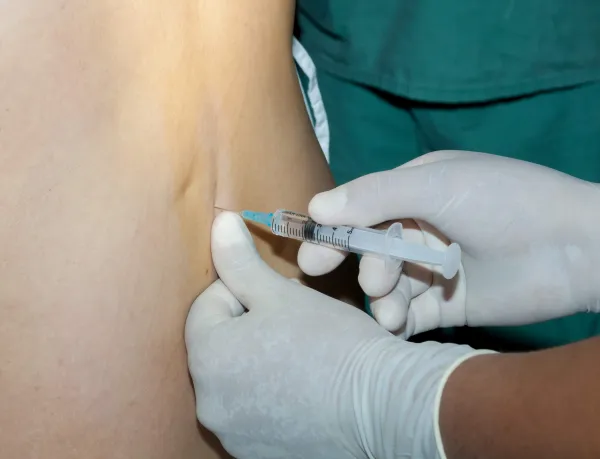Neurology & Pain Management Coding Alert
Mythbusters:
Know the Facts, Hit Bullseye on CTS Injection Claims
Published on Wed Sep 20, 2017

You’ve reached your limit of free articles. Already a subscriber? Log in.
Not a subscriber? Subscribe today to continue reading this article. Plus, you’ll get:
- Simple explanations of current healthcare regulations and payer programs
- Real-world reporting scenarios solved by our expert coders
- Industry news, such as MAC and RAC activities, the OIG Work Plan, and CERT reports
- Instant access to every article ever published in Revenue Cycle Insider
- 6 annual AAPC-approved CEUs
- The latest updates for CPT®, ICD-10-CM, HCPCS Level II, NCCI edits, modifiers, compliance, technology, practice management, and more
Related Articles
Other Articles in this issue of
Neurology & Pain Management Coding Alert
- Mythbusters:
Know the Facts, Hit Bullseye on CTS Injection Claims
CTS diagnosis a must for some, but not all, payers on 20526. Coders that can't [...] - Clip and Save:
Max Out Payment by Knowing CTS Shot Drug, Amount
Remember, not all CTS injections involve the same drug. When you're coding for therapeutic carpal [...] - ICD-10 Quiz:
Test Yourself on Nontraumatic Subarachnoid Hemorrhage Diagnoses
Location matters when choosing an I60.XX code. One important change that ICD-10 has introduced is [...] - Quiz Answers:
Check Your Nontraumatic Subarachnoid Hemorrhage Answers
Here are the answers to the ICD-10 coding quiz. Answer 1: The correct option is [...] - Advance Care Planning:
Use this Advice to File A-OK ACP Claims
Do you think POS matters on ACP services? Are you sure about that? Scratching your [...] - You Be the Coder:
Coding for Spinal Accessory Nerve Neoplasm
Question: Our physician documented a diagnosis of neoplasm in the spinal accessory nerve. What is the [...] - Reader Question:
Assume Nothing when Coding Spinal Fluid Collection
Question: I have a patient status post-laminectomy. The provider states that there is a fluid collection [...] - Reader Question:
Consider Age a Factor when Coding Early-, Late-Onset Alzheimer's
Question: If our provider diagnoses a patient with Alzheimer's disease, can I use the patient's age [...]
View All




